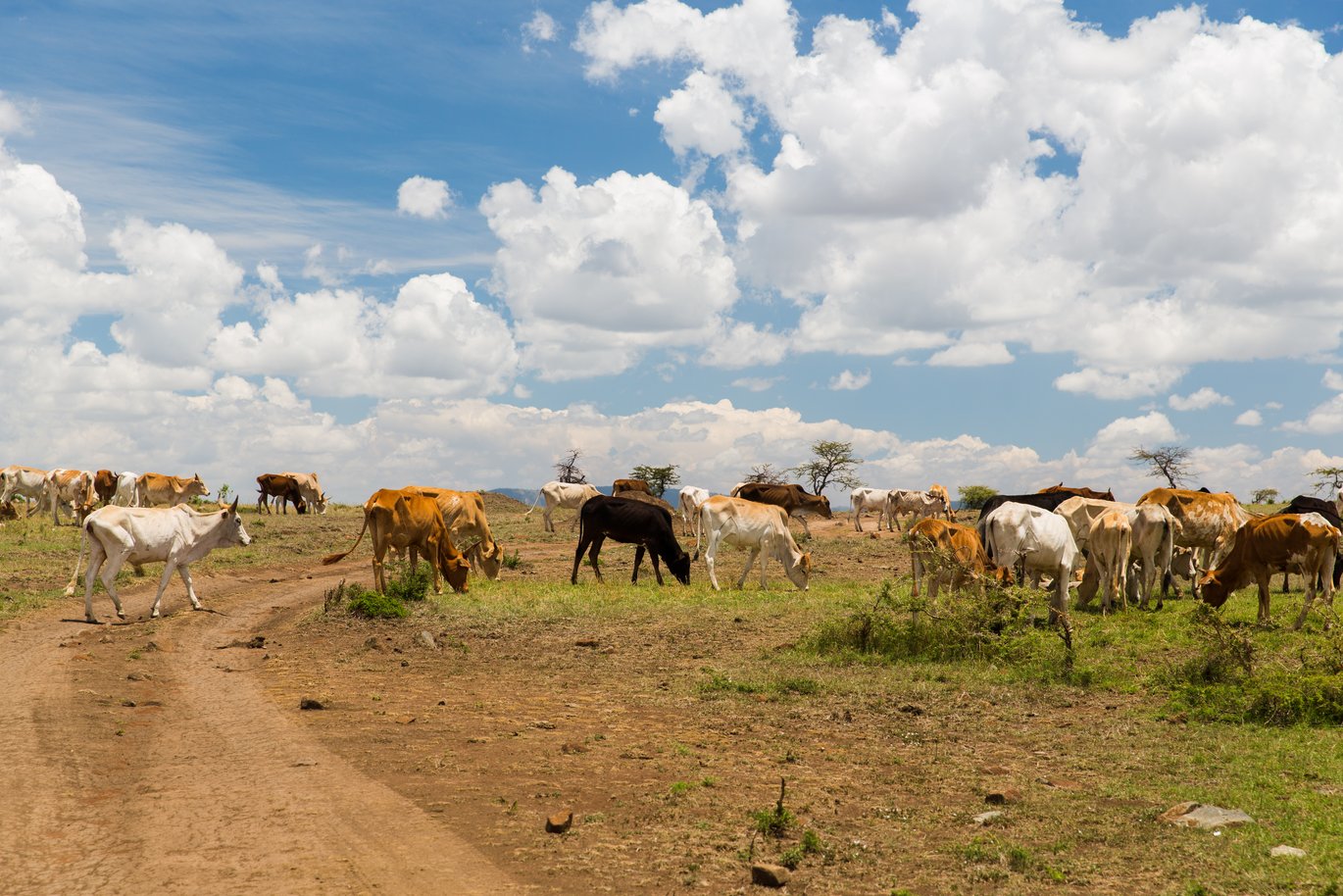Milk from goats and camels to replace milk from cows
In northern sub-Saharan Africa the future for dairy products from cattle is bleak. With climate change the temperature will rise and grass will wither. Without grass no cows, and without cows no milk, unless farmers shift from cattle herds to mixed herds of cattle, goats and camels. According to new research mixed herding will result in higher milk production, less inputs of water and feed as well as lower greenhouse gas emissions.

This summer, Europe was hit by extreme heat, setting record-high temperatures in several countries. Due to climate change, we may experience even higher temperatures in the future. Europe is not the only continent to be affected. In northern sub-Saharan Africa, they also feel the consequences. Heat stress is already a problem here, and it does not seem to get any better in the future. According to Professor Klaus Butterbach-Bahl and Dr. Jaber Rahimi from Land-CRAFT – Center for Landscape Research in Sustainable Agricultural Futures – a part of the Department of Agroecology at Aarhus University - it may ultimately affect livestock production and smallholder livelihoods.
“Milk production in northern sub-Saharan Africa is increasingly under stress due to climate change. This threatens livelihoods and food security in the region. Previously we have looked into how much livestock in this area of Africa is affected by heat stress, and what we found was already serious. Frequency and length of heat stress periods will jeopardize livestock production in the future,” Klaus Butterbach-Bahl says.
Milk is an important source of nutrition
Recently a move towards more plant-based diets has gained popularity in some parts of the world. However, in north sub-Saharan Africa, people do not have the same diversity of nutrients to choose from, making animal proteins, especially dairy products, highly important
“In drylands of sub-Saharan Africa animal protein is very important as a source of nutrition, and milk in particular is important for the well-being and growth of children. In northern sub-Saharan countries as in many other places, globally pastoralist communities do not have the same resources as in high-income countries to replace animal proteins with plant-based proteins. So a future with less or no milk or animal protein would be catastrophic,” Jaber Rahimi says.
Changes in climate will change regional feed availability
Current trends in feed availability indicate that with climate change, woody coverage increases while grass cover decreases, but that overall feed availability decreases.
“To make better use of regional feed availability while maintaining or increasing milk production a shift in herd composition from grazers (cattle) to browsers (goats and camels) is needed. But such a shift requires planning, education, and not least finances,” says Jaber Rahimi.
Goats and camels are better adapted to heat stress and harsh environments with a higher tolerance for drought and food scarcity whilst maintaining a significant production of milk and meat in all seasons.
Mixed herds will increase production and lower the climate impacts
So, is this the end of cattle in northern sub-Saharan countries? Will they be replaced by camels and goats?
“No, our results are region dependent but show that replacing about a quarter of the cattle with a mix of goats and camels allows for an increase in milk production while the need for water and feed decreases. Moreover, total greenhouse gas emissions due to dairy milk production will be lower too,” Klaus Butterbach-Bahl explains.
Help is needed
This is a long-term effort, and it is not something the farmers can achieve alone. There is a need for more education on goat and camel care, financial assistance, and assistance with breeding programs. So, it is a change that will not happen overnight, but it is a change of great importance. According to Jaber Rahimi it is important to start acting and preparing now.
“This is not a quick fix, and aid organizations may help to allow pastoralists in these regions to adapt their livestock systems and to make livestock production in drylands of sub-Saharan Africa more climate resilient,” he says.
Additional information | |
We strive to ensure that all our articles live up to the Danish universities' principles for good research communication (scroll down to find the English version on the website). Because of this, the article will be supplemented with the following information: | |
| Collaborators | Pioneer Center Land-CRAFT – Department of Agroecology at Aarhus University, Karlsruhe Institute of Technology (KIT), Action Against Hunger (AAH), University of Edinburgh, Food and Agriculture Organization (FAO), Tropical Forages Program – International Center for Tropical Agriculture (CIAT), Wageningen University & Research and International Livestock Research Institute (ILRI) |
| Funding | Europeans Union’s Horizon 2020 research and innovation program under the Marie Sklodowsk-Curie grant agreement No 871944 (Integrated Nitrogen Studies in Africa). It was partly funded by the German Helmholtz ATMO “Atmosphere and Climate” program as well as the KIT-Publication Fund of Karlsruhe Institute of Technology. |
| Conflicts of interest | None |
| Read more | The publication “A shift from cattle to camel and goat farming can sustain milk production with lower inputs and emission in north sub-Saharan Africa’s drylands” is published in Nature Food. It is written by Jaber Rahimi, Erwann Fillol, John Y. Mutua, Giuseppina Cinard, Timothy P. Robinson, An M. O. Notenbaert, Polly J. Ericksen, Michael W. Graham, and Klaus Butterbach-Bahl. |
| Contact | Professor and Center Manager Klaus Butterbach-Bahl, Center for Landscape Research in Sustainable Agricultural Futures – Land-CRAFT, Department of Agroecology, Aarhus University. Tel.: +45 93508238 or e-mail: Klaus.butterbach-bahl@agro.au.dk |